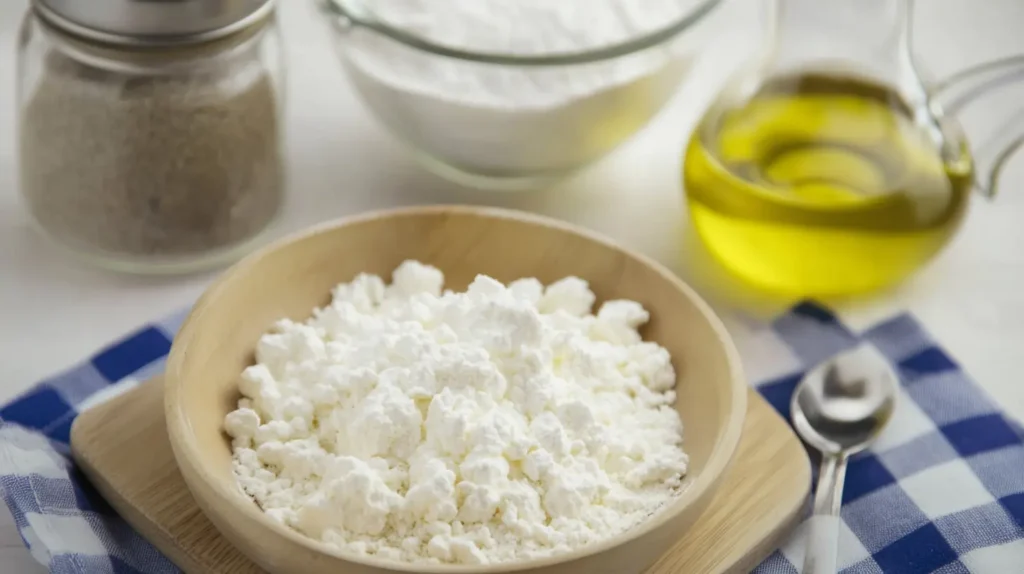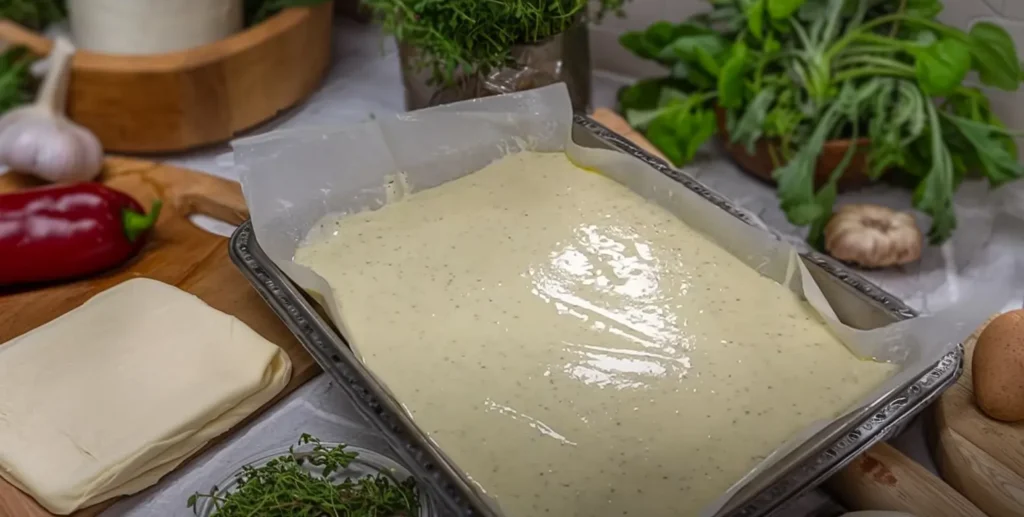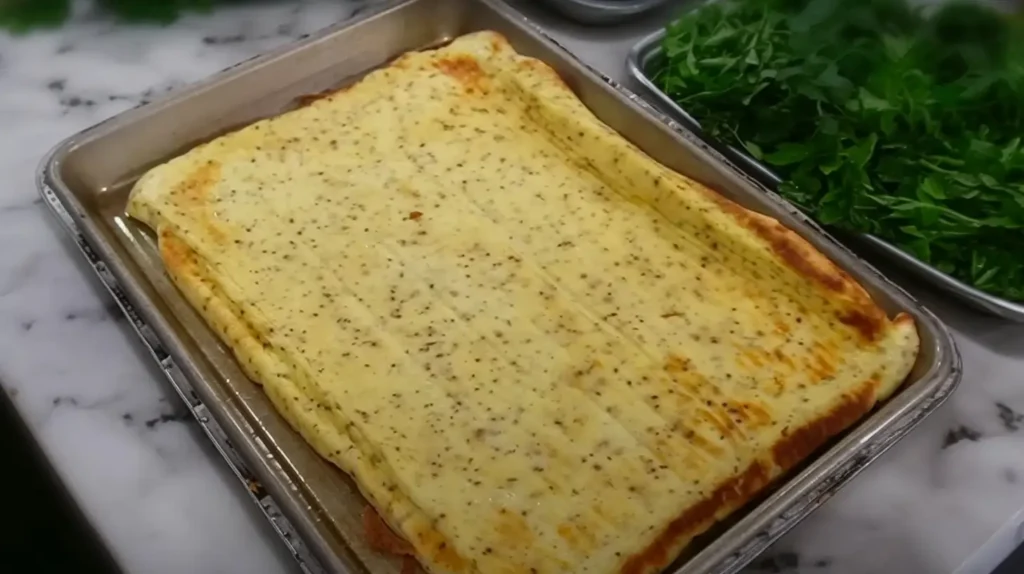This cottage cheese flatbread recipe has become one of our most requested dishes, combining the richness of cottage cheese with a perfectly tender bread texture. Unlike traditional flatbreads, our cottage cheese flatbread offers a unique protein boost while maintaining an irresistibly soft texture.
Picture yourself pulling apart a warm, cloud-like flatbread, watching tendrils of steam escape as the aroma of freshly baked goodness fills your kitchen. That’s not just any flatbread – it’s your homemade cottage cheese flatbread, and you’re about to discover exactly how to achieve that perfect texture that makes this recipe truly special.
Quick Recipe Overview: Your Path to Flatbread Success
Before diving into the details, let’s get you oriented with what you’re about to create. This recipe transforms simple ingredients into something extraordinary, and knowing what you’re aiming for makes all the difference.
Recipe Details
Time Required
Prep: 20 mins
Rest: 30 mins
Cook: 15 mins
Difficulty
Medium
Servings
8 flatbreads
Essential Ingredients for Your Perfect Flatbread
Recipe Ingredients
All ingredients should be at room temperature
Understanding Your Ingredients: The Magic of Cottage Cheese in Bread Making
You might wonder why cottage cheese makes such a difference in flatbread. The secret lies in its unique composition. When you incorporate cottage cheese into your dough, you’re not just adding another ingredient – you’re introducing a complex network of proteins and fats that transform your flatbread’s texture.
The Science Behind the Perfect Crumb
The protein content in cottage cheese works alongside wheat proteins to create a stronger gluten network, while its natural fats tenderize the dough. This combination results in flatbread that’s simultaneously sturdy enough to hold your favorite toppings and tender enough to melt in your mouth.
Creating Your Perfect Dough: A Step-by-Step Journey
1. Preparing Your Ingredients

Success starts before you even mix your dough. Here’s what you need to know:
- Bring your cottage cheese to room temperature for even distribution
- Sift your flour to eliminate lumps and incorporate air
- Check your baking powder’s freshness – it should fizz vigorously in warm water
2. Mixing Your Way to Success
Your mixing technique can make or break your flatbread’s texture. Follow these crucial steps:
- Combine dry ingredients first, whisking to distribute evenly
- Mix cottage cheese with olive oil until smooth
- Create a well in your dry ingredients
- Gradually incorporate wet into dry, mixing just until combined
- Stop mixing as soon as no dry flour remains visible
3. The Critical Rest Period
Here’s where patience becomes your secret ingredient. During the 30-minute rest period, several crucial processes occur:
- Flour proteins fully hydrate
- Gluten network develops naturally
- Cottage cheese proteins integrate fully with the dough
4. Shaping Your Flatbreads
The key to perfect cottage cheese flatbread lies in gentle handling. Unlike regular flatbread, this enriched dough requires special attention to maintain its tender texture.

Your shaping technique directly impacts the final texture. Follow these professional tips:
- Divide dough into 8 equal portions
- Shape each portion into a ball using gentle circular motions
- Roll each ball into a 6-inch circle, maintaining even thickness
- Keep unused portions covered while working
5. Cooking for Perfect Results
Whether you’re using a stovetop or oven, temperature control is crucial:
Stovetop Method:
- Preheat your pan over medium-high heat
- Cook 2-3 minutes per side
- Look for golden-brown spots and slight puffing
Oven Method:
- Preheat to 450°F (230°C)
- Use a preheated baking stone if available
- Bake 4-5 minutes per side

Troubleshooting Common Texture Issues
Troubleshooting Guide
Issue
Tough texture
Cause
Overworked dough
Solution
Mix just until ingredients combine
Issue
Dense result
Cause
Insufficient rest
Solution
Allow full 30-minute rest period
Issue
Uneven cooking
Cause
Irregular thickness
Solution
Use consistent rolling pressure
Taking Your Flatbread to the Next Level
Creative Variations to Try
- Fresh herbs: Fold chopped rosemary or thyme into your dough
- Spice blends: Add za’atar or everything bagel seasoning
- Cheese boost: Mix in shredded parmesan for extra flavor depth
Perfect Pairings
Your cottage cheese flatbread pairs beautifully with:
- Breakfast: Wrapped around scrambled eggs
- Lunch: As a base for open-faced sandwiches
- Dinner: Alongside your favorite curry or stew
Storage and Make-Ahead Tips
Your cottage cheese flatbread will stay fresh when properly stored. While best enjoyed fresh, these cottage cheese flatbreads can be made ahead and reheated when needed.
Keep your flatbreads fresh and ready:
- Store cooled flatbreads in an airtight container
- Refrigerate for up to 3 days
- Reheat in a dry skillet for 30 seconds per side
- Freeze for up to 3 months, separated by parchment paper
Frequently Asked Questions
Your Path to Flatbread Mastery
Creating the perfect cottage cheese flatbread isn’t just about following a recipe – it’s about understanding the process and making it your own. With these techniques and tips in your culinary arsenal, you’re well-equipped to create flatbreads that are both delicious and consistently successful.
Remember, the key to mastery lies in practice. Each batch you make builds your experience and intuition. Start with our basic recipe, then experiment with variations once you’ve mastered the fundamentals. Your perfect flatbread journey begins now – preheat that pan and get ready to create something extraordinary.
With these tips and techniques, you’re ready to master the art of cottage cheese flatbread making. Remember that practice makes perfect, and each batch of cottage cheese flatbread you make will help you understand the subtle nuances of this versatile recipe.



